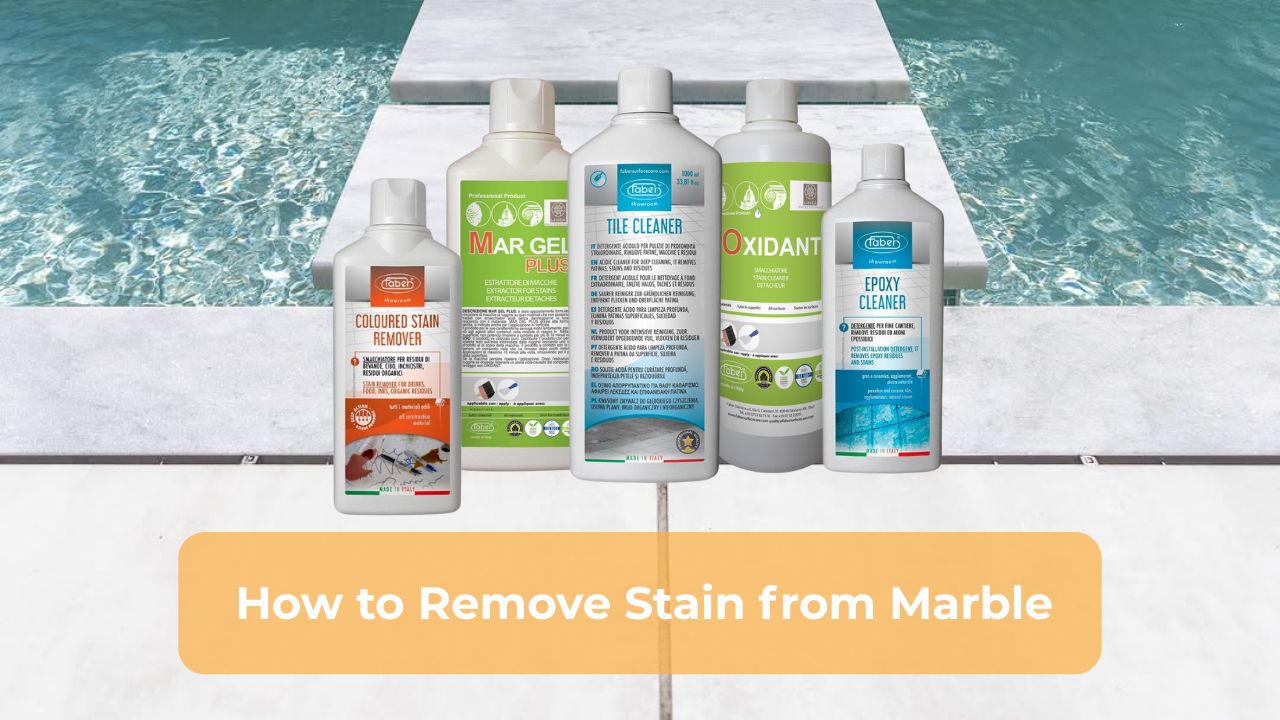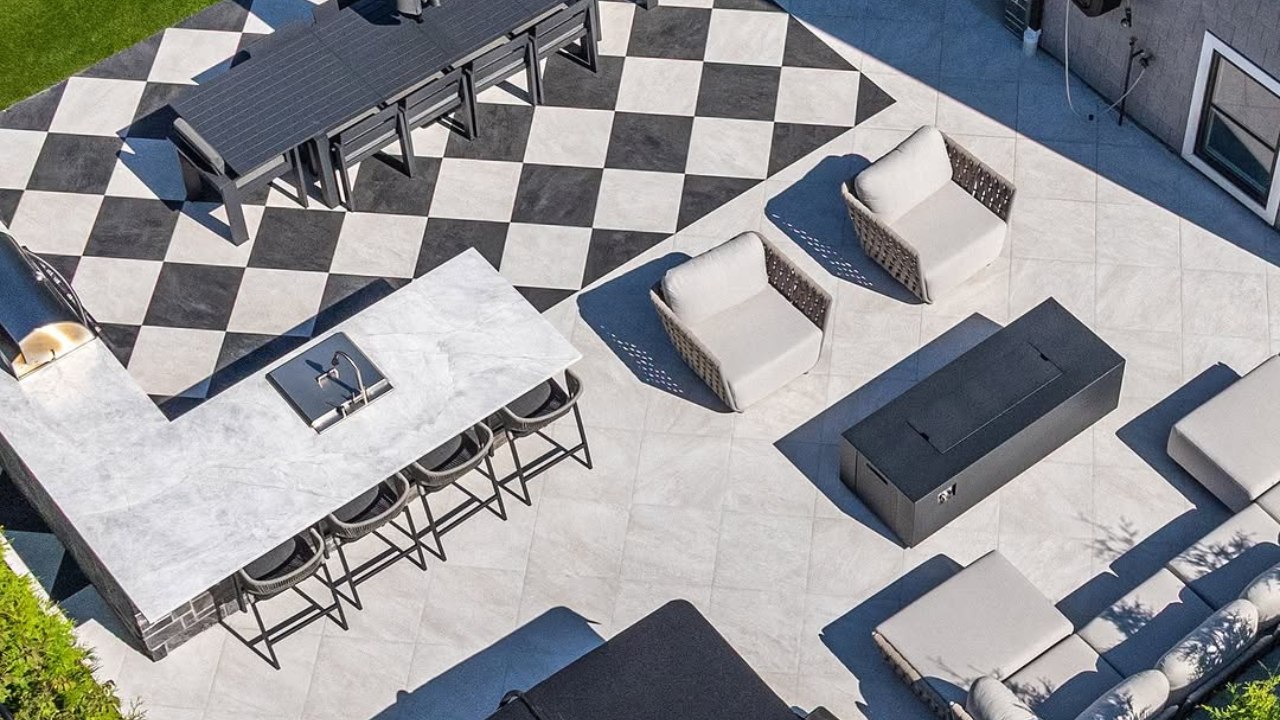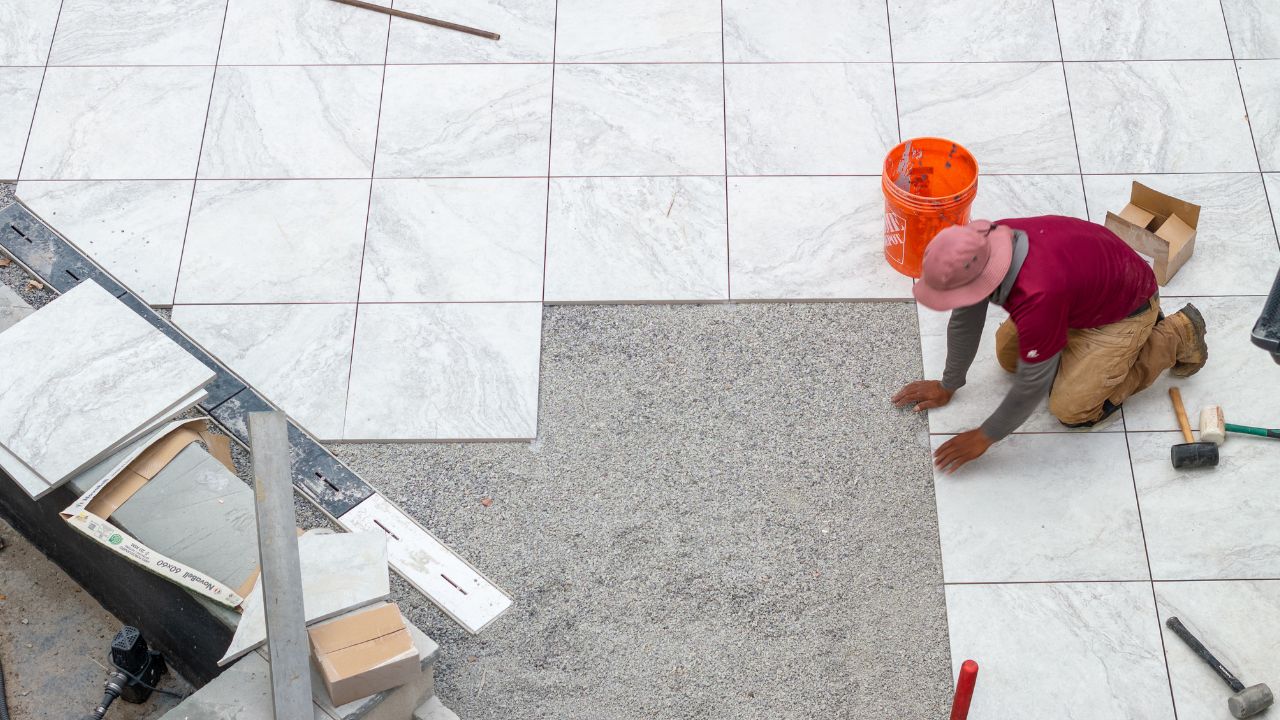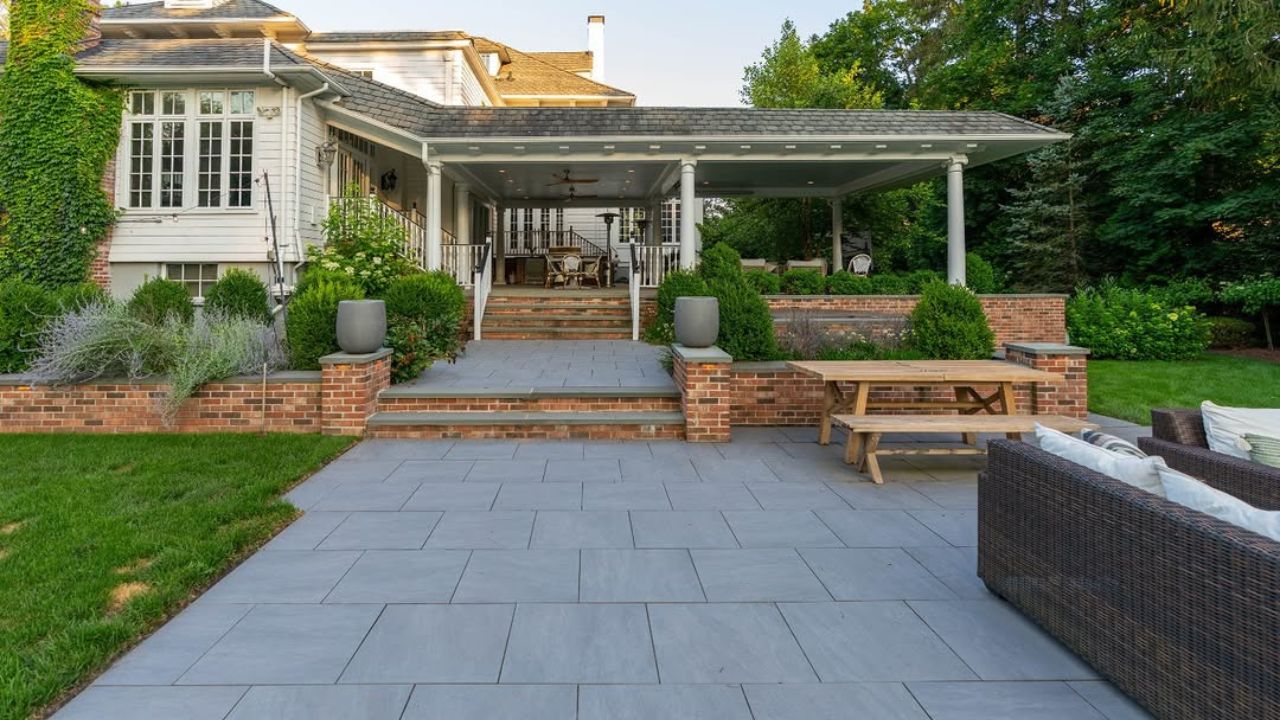Marble is a popular natural stone for home construction, especially for luxurious indoors. Even for outdoors, when sealed properly. However, when it comes to maintaining marble pavers, this can be overwhelming. Knowing how to remove stains from marble can be greatly helpful in keeping its natural luster intact. However, not every stain is easy to clean, and won’t come off with a single attempt. Not knowing how to clean marble will result in a damaged or discolored surface. A surface that will require total replacement. This is why learn to remove stains from marble by identifying the stains, the stained area, and more.

Tools and Materials To Remove Stains From Marble
Before cleaning, gather the right materials. Using improper marble cleaners can worsen the stain.
Material Required:
- Neutral pH marble cleaner
- Baking soda or poultice powder
- Hydrogen peroxide (for organic stains)
- Acetone (for oil-based stains)
Tools Required:
- Soft microfiber cloths
- Plastic wrap and masking tape
- Plastic spatula or scraper
- Gloves and protective eyewear
Having these on hand will assure you that you can act immediately when spills happen.
Step-by-Step Process To Remove Stains From Marble
These straps are precise and easy to follow when you want to remove marble stains. Here is what you need to know:
- Identify the stain type: First, you should learn what caused the stain to determine the method. Each stain type has its own removal method.
- Blot, don’t rub: Rubbing spreads the stain further into the pores.
- Prepare your cleaning solution: Use only marble-safe ingredients and never use acidic or bleach items. Create a poultice paste using baking soda and water or hydrogen peroxide. A water and baking soda mix works against most stain types on marble.
- Cover the area: Seal it with plastic wrap and tape to retain moisture.
- Wait 24–48 hours: The poultice usually draws the stain out from the marble in this duration.
- Remove the wrap and clean: rinse with distilled water and a soft cloth.
- Dry and inspect: repeat if any discoloration remains.
Now, here is the process for each stain type:
How to Remove Organic Stains From Marble
- Use a paste of baking soda and hydrogen peroxide.
- Apply gently over the stain and cover it with plastic.
- Leave for 24 hours and let it dry.
- Rinse once it is completely dry.
How to Remove Oil-Based Stains From Marble
- Create a mixture of baking soda with a few drops of mild dish soap, acetone, or ammonia diluted in water.
- Dab the area with the mixture.
- Repeat until the oil dissolves.
- Re-seal the marble afterward to prevent reabsorption.
How to Remove Rust Stains From Marble
- Use a marble-safe rust remover for this.
- Apply the stone-specific rust remover like MAR GEL PLUS Rust Stain Remover for Marble Surface, following the label’s instructions.
- Gently clean the rust stains and rinse them with water, but don’t force it.
- Never use acid-based products, as they will etch the stone.

How to Remove Ink or Dye Stains from Marble
- Use acetone for dark marble or hydrogen peroxide for light marble.
- You can also check the specific “Colored Stain Remover for marble pavers”
- Always test a small area first to check for color change.

How to Remove Water or Mineral Deposits from Marble
- Remove surface build-up with a damp cloth and a marble cleaner.
- Avoid hard scrubbing; use a soft brush for mineral buildup.
How to Remove Biological Stains from Marble
- Stains like mould or fungi (in pool areas) can be cleaned with diluted hydrogen peroxide or a marble-safe mold cleaner.
- Improve ventilation to prevent regrowth.
Don’t force cleaning to remove stains from marble. Patience matters a lot in here. For deeper stains, several applications may be necessary.
Types of Stains Commonly Found on Marble
Not all stains act the same. Though most stains require immediate attention but some can result in even deeper damage than others. The treatment depends on what caused the discoloration.
Organic Stains
These are usually coffee, wine, tea, fruit, or leaves, which appear light brown or pink. They oxidize over time and get darker when exposed to air.
Oil-Based Stains
These are the greases, lotion, and cooking oil that leave a darker shadow on the surface. These marble stains slowly spread on the surface as the oil penetrates deep into the pores.
Rust and Metal Stains
Iron, nails, or cans sitting on wet marble leave orange or brown rust spots. They are hard to remove without the right product.
Ink and Dye Stains
Permanent markers, ink stains, or hair dye can leave colored patches. They are more visible in the light marble. However, darker marble hides them but remains stained underneath.
Water and Mineral Stains
Hard water leaves white rings or chalky marks, especially near faucets or sinks. These aren’t stains in the usual sense but mineral deposits.
Biological Stains
In humid areas like showers or patios, mildew and algae can form green or black stains. They require both cleaning and disinfection.
Where Stains Typically Appear
Marble is a popular choice for a wide range of applications, from residential to commercial interiors and even outdoors. However, wherever it will be used, staining on marble is prevalent, such as:
- Marble countertops in the Kitchen are often prone to staining with oil and food.
- Marble Bathrooms and Vanity slabs are directly exposed to cosmetics, nail polish, toothpaste, and water stains.
- Floors and living areas are more vulnerable to spills, dirt stains, and shoe marks.
- Outdoor marble patios are more exposed to biological stains, including rust and weathering.
- A marble countertop in the office and reception areas often gets stains from ink and coffee marks.
Understanding the stains type occur will help you to clean up routines before damage settles in.
Preventing Future Marble Stains
Most marble stains are preventable with simple habits.
- Whenever spills occur, wipe them immediately, especially oil, juice, and wine.
- Use coasters, trivets, and cutting boards to prevent scratches and moisture staining the marble surface.
- Reseal marble every 6–12 months using a high-quality sealer. Here’s a detailed guide on how to seal marble properly.
- Do not use any acidic substances like vinegar, lemon, or bleach. They react badly with marble.
- Place mats near doors to reduce tracked-in dirt.
- Dust-mop marble floors regularly to avoid grit scratches.
These daily mindful habits will keep the marble in great shape for two decades.

When to Call a Professional
Though these DIY methods work great to remove the stain, sometimes the stain can be too stubborn :
- The stain is still there after several treatments.
- The marble has deep etching or dull patches.
- Rust or mold has penetrated below the surface.
- You are not sure about the marble type or finish.
Professional cleaners have specialized poultices, polishing compounds, and restoration tools that rejuvenate marble without damaging its structure.
FAQs About How to Remove Stains from Marble
Let’s answer your questions about how to remove stains from marble.
Are all marble stains removable?
Yes. Most of the stains from marble are removable if treated early. However, Deep-set stains may lighten rather than disappear completely, which requires professional stain removal.
Can vinegar remove stains from marble?
No. Vinegar and lemon juice are acidic and will etch the surface, leaving a dull patch. Go for the pH-neutral cleaning products. Test it on an inconspicuous area first.
What’s the safest DIY method for oil stains?
Use an acetone or baking soda poultice to clean marble. Never apply acidic solutions or bleach-based cleaners.
Does hydrogen peroxide damage marble?
Not when used correctly. It’s safe for light-colored marble in small quantities, but should not be left for extended periods.
How often should marble be sealed?
Every 6–12 months. Depending on the area of application, use, and exposure to direct sunlight. High-traffic areas require more frequent sealing.
Does sunlight cause marble discoloration?
Yes. Prolonged UV exposure can fade darker marbles.
Can professional polishing remove stains?
Yes, polishing can remove surface stains and etching. This is especially true when combined with deep cleaning and resealing.
Bottom Line
Marble is undoubtedly a great choice for modern and traditional homes. However, it is expensive and requires routine maintenance to keep its looks intact. Keep it stain-free so it will stay in its best form for years. Knowing how to remove stains from marble can be greatly helpful in this regard. Marble rewards care with a long-lasting natural beauty. It’s strong yet porous, elegant yet sensitive.
Make sure to act quickly to clean the spills. Use the right cleaning method for each stain type. This will maintain the richness of your stone for years.







